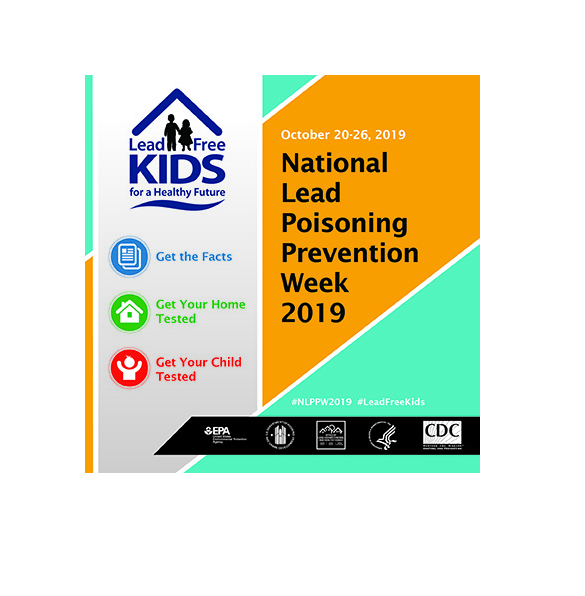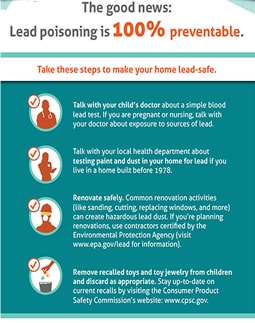Lead Poisoning Prevention
The goal is to prevent childhood lead exposure before any harm occurs.
- Primary prevention – the removal of lead hazards from the environment before a child is exposed – is the most effective way to ensure that children do not experience harmful long-term effects of lead exposure.
- Secondary prevention – including blood lead testing and follow-up – remains an essential safety net for children who may already be exposed to lead.
A blood test is the best readily available way to measure exposure to lead. The amount of lead in blood is referred to as blood lead level which is measured in micrograms of lead per deciliter of blood (μg/dL).
No safe blood lead level in children has been identified. Even low levels of lead in blood have been shown to affect IQ, the ability to pay attention, and academic achievement. The good news is that childhood lead poisoning is 100% preventable.
Preventing childhood lead exposure is cost-effective.
According to a 2017 report from the Health Impact Projectpdf iconexternal icon, a federal investment of $80 billion would prevent all U.S. children born in 2018 from having any detectable levels of lead in their blood. This investment has an estimated $83.9 billion in societal benefits, which represents a 5% return on investment. If it cost less than $80 billion to remove lead from the environment, then the cost-benefit ratio would be greater. Additionally, permanently removing lead hazards from the environment would benefit future birth cohorts, and savings would continue to grow over time.
CDC is committed to help address this threat and improve health outcomes for our nation’s most vulnerable citizens – our children.


